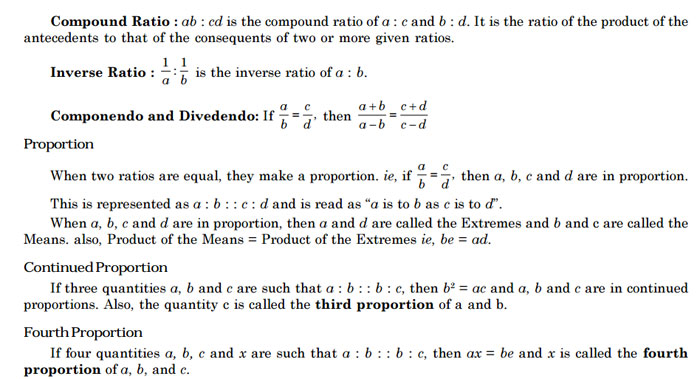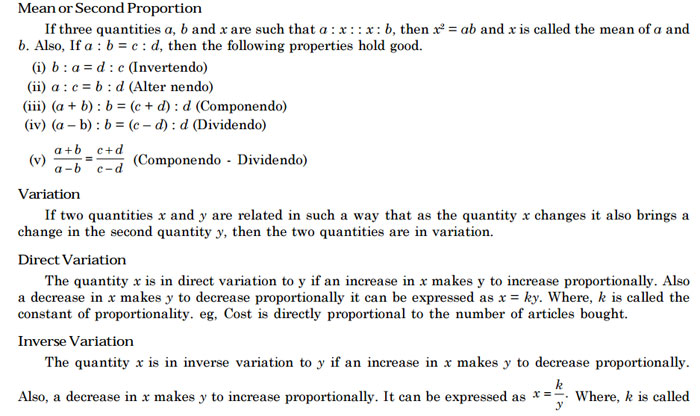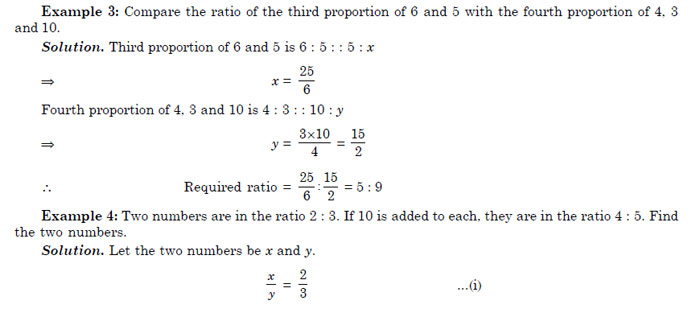Study Materials for IBPS, Bank Exams : Numerical Ability/Quantitative Aptitude - Ratio and Proportion
Study Materials for IBPS, Bank Exams : Numerical Ability/Quantitative Aptitude - Ratio and Proportion
The ratio of two quantities a and b is the fraction a/ b and is expressed as a : b. Here a is the first term or antecedent and b is the second term or consequent. Since the ratio expresses the number of times one quantity contains the other, it is an abstract (without units) quantity.
A ratio remains unaltered if its numerator and denominator are multiplied or divided by the same number. eg, 4 : 3 is the same as (4 × 10) : (3 × 10) ie, 40 : 30.
“A ratio is said to be a ratio of greater or less inequality or of equality
according as antecedent is
greater than, less than or equal to consequent”.
- If a > b, then a : b is called a ratio of greater inequality (eg, 4 : 3, 5 : 2, 11 : 3, ...)
- If a < b, then a : b is called a ratio of less inequality (eg, 3 : 4, 2 : 5, 3 : 11, ...)
- If a = b, then a : b is called a ratio of equality (eg, 1 : 1, 3 : 3, 5 : 5, ...)
Kinds of Ratios


Mean Second Proportion

the constant of proportionality. eg, The time taken by a vehicle in covering a certain distance is inversely proportional to the speed of the vehicle.
Joint Variation
If there are more than two quantities x, y and z and x varies with both y and z, then x is in joint variation to y and z. It can be expressed as x = kyz. Where, k is the constant of proportionality. eg, Men doing a work in some number of days working certain hours a day.
Distribution of an Amount
If an amount A is distributed in the ration a : b, then




